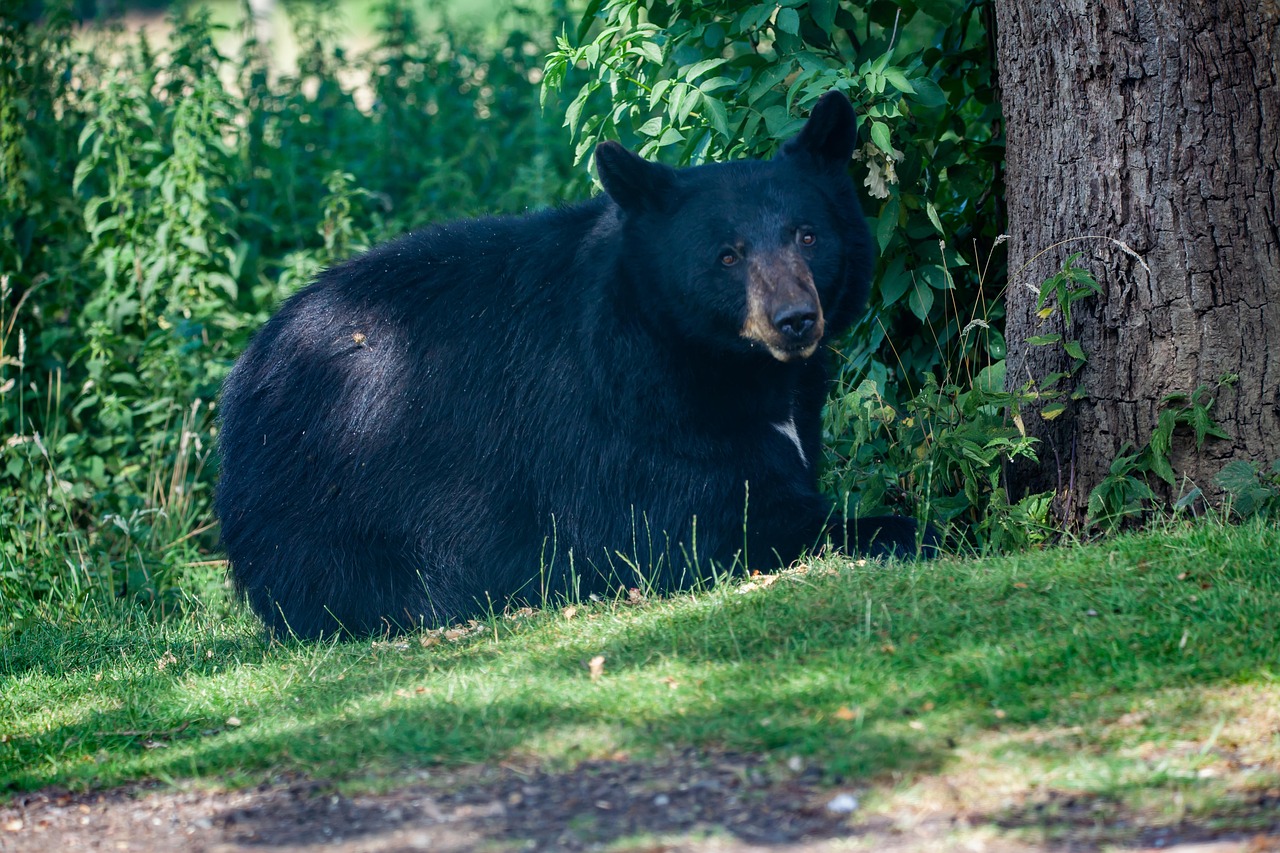
Understanding Black Bear Behavior: What to Expect on Your Hunt
Understanding Black Bear Behavior: What to Expect on Your Hunt
A successful black bear hunt doesn’t just rely on having the right gear or the best guide—it requires an understanding of how bears behave in their natural habitat. Black bears are intelligent, adaptable creatures, and knowing their movement patterns, feeding habits, and territorial instincts can significantly improve your chances of encountering a mature boar.
Hunting in northwestern British Columbia offers a unique opportunity to observe black bears in one of the best bear habitats in North America. Whether you’re hunting in the spring or fall, understanding how bears think and react will help you anticipate their movements and make the most of your time in the field.
Black Bear Seasonal Behavior: Spring vs. Fall
Spring (April – June)
After emerging from hibernation, black bears are hungry and on the move. Their primary goal is to regain lost weight after several months of fasting. This makes them highly active during the day, often moving through open meadows and clear-cuts in search of early-season vegetation, roots, and carrion.
Key Spring Behaviors:
- Food Focused: Bears feed almost non-stop, prioritizing grasses, skunk cabbage, and other fresh greens.
- Traveling More Frequently: Since food is still scarce, they cover large distances to find the best feeding spots.
- Less Aggressive: Mating season hasn’t begun yet, so dominant males tolerate other bears in feeding areas.
- Predictable Movements: They follow low-elevation river valleys and sunny slopes where food appears first.
Fall (September – October)
As winter approaches, black bears enter hyperphagia, a stage where they eat obsessively to build fat reserves. Their diet expands to include berries, nuts, and salmon (if available). Boars become territorial, and competition for prime feeding areas increases.
Key Fall Behaviors:
- Eating Nearly 24/7: Bears can consume up to 20,000 calories per day to prepare for hibernation.
- More Aggressive Behavior: Mature boars dominate feeding areas, pushing younger bears out.
- Shorter Travel Ranges: Bears stay near consistent food sources, such as berry patches and salmon streams.
- Less Predictable Movements: As food becomes scarce, bears wander unpredictably in search of high-calorie meals.
Where to Find Black Bears: Habitat & Movement Patterns
Understanding black bear habitat selection can help you locate them more efficiently. Bears move through different environments based on food availability and seasonal changes.
Prime Bear Locations in Northwestern BC:
- South-Facing Hillsides – These areas are the first to get sunlight, meaning earlier plant growth in the spring. Bears favor these slopes for feeding.
- Clear-Cuts & Logging Roads – Fresh vegetation grows quickly in cut blocks, making them prime spots for grazing bears.
- River Valleys & Streams – Bears frequently travel along waterways, especially in fall when looking for fish and fallen fruit.
- Burn Areas & Alpine Meadows – Regenerated burns produce lush grasses and berries that attract bears.
- Dense Forest Edges – Bears prefer thick cover for resting but will venture to open areas for food.
How Bears Detect You: Sight, Smell, and Hearing
Bears have excellent senses, and knowing how they perceive their surroundings is key to staying undetected.
- Smell: A black bear’s sense of smell is seven times stronger than a bloodhound’s, allowing them to detect food and danger from miles away. Staying downwind is critical when stalking a bear.
- Hearing: Bears have great hearing and will pick up unnatural sounds like breaking twigs or metallic noises from rifles and gear.
- Sight: While their eyesight isn’t as sharp as a deer’s, bears can recognize movement and silhouettes. Staying still and using natural cover helps avoid detection.
Black Bear Communication & Signs to Watch For
Bears use body language and vocalizations to communicate. Recognizing these signals can help hunters identify a bear’s mood and avoid unnecessary risks.
- Head Bobbing & Bluff Charges: If a bear bobs its head or makes a short charge, it is assessing whether you are a threat. Hold your ground and do not run.
- Jaw Popping: A sign of agitation or discomfort—if a bear does this, give it space.
- Ear Positioning: Relaxed ears indicate a calm bear, while pinned-back ears signal nervousness or aggression.
- Tracks & Scat: Fresh tracks, claw marks on trees, and droppings filled with berries or vegetation indicate recent bear activity.
Why Understanding Bear Behavior Improves Your Hunt
Studying bear behavior does more than just help you find a bear—it ensures you make the right decisions when taking a shot. Knowing where they travel, how they respond to movement, and when they’re most active allows for more strategic hunting. The more you learn about your quarry, the better your odds of success.
Why Hunt with Kildala Adventures?
Hunting black bears in BC’s rugged wilderness requires more than just a tag and a rifle—it demands knowledge, experience, and the right strategy. At Kildala Adventures, we specialize in:
- Tracking black bears based on real-time movement patterns and seasonal behaviors.
- Guiding hunters through prime habitat areas for the best chances of success.
- Helping clients understand and respect bear behavior for a more rewarding hunt.
With decades of experience hunting in BC, our guides know how to put you in the right place at the right time. If you’re looking for a world-class, fair-chase black bear hunt, contact Kildala Adventures today to book your hunt.
The key to a successful black bear hunt is understanding how bears think and move. By recognizing seasonal feeding patterns, knowing where to locate active bears, and understanding their senses and behaviors, you can significantly increase your chances of a successful hunt.
Whether you’re a first-time black bear hunter or a seasoned outdoorsman, hunting with Kildala Adventures ensures that you’ll be in expert hands. Join us for an unforgettable black bear hunting experience in northwestern British Columbia!
